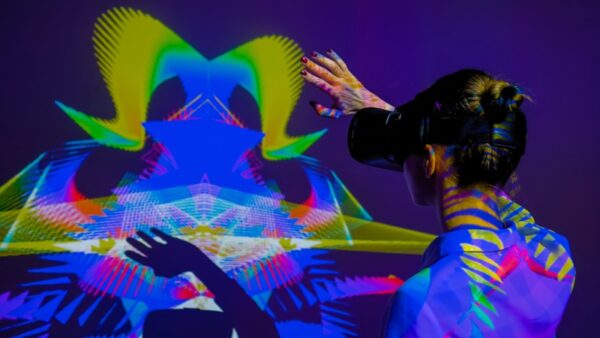The technology that Museum AV is using for exceptional experiences
Today’s museums are not the old, dusty spaces of the past century. Museum AV is one of the most cutting-edge uses of augmented and virtual reality, projection mapping, and interactive technology. You can walk through Van Gogh’s most famous pieces in a traveling exhibit. Want to hear a presentation in a different language? Today’s museum has you covered. Whether you want to interact with the past or a post-modern future, it’s the audiovisual technology that makes it possible.
AV you don’t see

Museums and art galleries have long been bastions of cultural heritage, education, and inspiration. However, in recent years, these institutions have undergone a significant transformation, embracing modern audiovisual (AV) technologies to create immersive, engaging, and interactive experiences for visitors. By incorporating digital kiosks, thoughtful lighting design, virtual and augmented reality, interactive displays, and advanced audio technology, museums are reinventing how people experience art, cultural antiquities, and historical events.
One of the primary challenges faced by museums when integrating AV technology is to do so without distracting from the exhibits themselves. The “King Tut: Treasures of the Golden Pharaoh” traveling exhibit is a prime example of how technology can be seamlessly incorporated to enhance the visitor experience. By using immersive projection systems, creative audio features, and projection mapping, the exhibit guides visitors through the story of King Tut while keeping the focus on the artifacts. The use of alternating digital and physical aspects maintains visitor attention and creates a natural flow through the galleries.
Bringing you INTO the experience

Virtual and augmented reality technologies are also transforming the way museums engage with their visitors. The Nelson-Atkins Museum of Art in Kansas City, Missouri, has explored the use of VR to provide previews of upcoming exhibitions, allowing potential visitors to experience the art from the comfort of their homes. VR can also enable visitors to interact with exhibits in ways that would be impossible in the physical world, such as exploring the intricate details of fragile or miniature objects. Additionally, museums are using VR for internal purposes, such as documenting gallery renovations and optimizing exhibit design.
Augmented reality, while not yet widely adopted, holds immense potential for museums. By using personal smartphones, visitors can access additional content and interactive features that enhance their understanding and appreciation of the exhibits. The Detroit Institute of Arts, for example, uses Google’s Tango platform to provide navigation assistance and allow visitors to see inside a mummy’s casket using their mobile devices. This technology can help museums connect with younger audiences who are accustomed to using personal devices for various activities.
Digital Museum AV
Some museums are taking the integration of AV technology to the next level by creating entirely digital experiences. EPIC the Irish Emigration Museum in Dublin is a prime example of how content, space, and technology can be combined to create a meaningful and memorable visitor experience without relying on traditional physical exhibits. Through the use of digital displays, touchscreens, and interactive AV pods, visitors become their own guides, unlocking personal stories and engaging with the history of Irish emigration. The museum’s interactive exhibits allow for personalization based on the visitor’s home country, reinforcing the idea that the story of Irish emigration is the visitor’s own story.
The trend towards more interactive, tactile, and personalized elements in museum exhibits is essential for reaching larger and younger audiences. As Mark McGowan, Head of Technology for EPIC, notes, “Many people nowadays engage more readily with information presented digitally than in more traditional formats.” By embracing AV technology, museums can provide a familiar and accessible way for younger generations to learn and engage with the content.
The integration of AV technology in museums is not without its challenges, however. Museums must strike a balance between incorporating technology and preserving the integrity of their exhibits. It is crucial to work with experienced AV professionals who understand the importance of implementing these technologies without distracting from the purpose of the exhibit. Additionally, museums must continue to adhere to their core values, such as providing access to educational content, raising awareness of the importance of culture, and preserving artifacts.
Future of Exhibits
The integration of museum AV is revolutionizing the way visitors experience and engage with art, history, and culture. From immersive digital exhibits and virtual reality experiences to data-driven decision-making and entirely digital museums, the possibilities are endless. By embracing these technologies, museums can reach larger and more diverse audiences, create lasting impressions, and ensure their relevance in an increasingly digital world. As museums continue to evolve and adapt to new technologies, visitors can look forward to even more engaging, interactive, and transformative experiences in the years to come.









